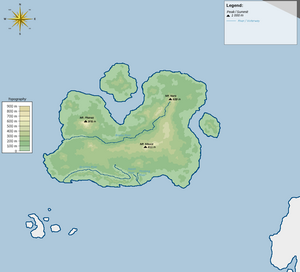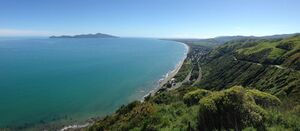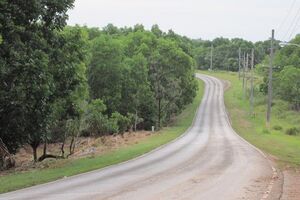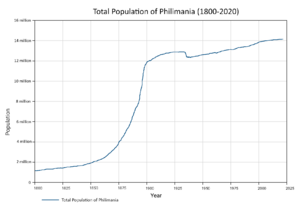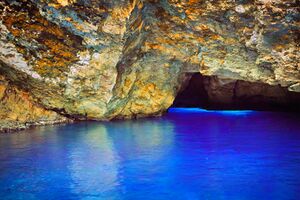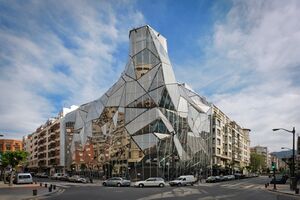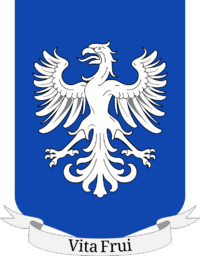Philimania: Difference between revisions
mNo edit summary |
Philimania (talk | contribs) mNo edit summary |
||
| Line 1: | Line 1: | ||
{{NSNIcon|Philimania}}{{ | {{NSNIcon|Philimania}} | ||
{{shift}} | |||
{{wip}} | {{wip}} | ||
{{Infobox country | {{Infobox country | ||
| Line 14: | Line 15: | ||
|national_anthem = "[[Toku Nuu]]"<br />({{Lang-en|"My Nation"}})<div style="padding-top:0.5em;" class="center">[[File:Rty.png|frameless|link=https://www.youtube.com/watch?v=DWfZ_ydxsHo]]</div> | |national_anthem = "[[Toku Nuu]]"<br />({{Lang-en|"My Nation"}})<div style="padding-top:0.5em;" class="center">[[File:Rty.png|frameless|link=https://www.youtube.com/watch?v=DWfZ_ydxsHo]]</div> | ||
|royal_anthem = | |royal_anthem = | ||
|image_map = Globephili.png | |image_map = <!--Globephili.png-->''TBA'' | ||
|map_width = 230px | |map_width = 230px | ||
|alt_map = | |alt_map = | ||
|map_caption = Location of '''Philimania''' (dark green)<br>– in South | |map_caption = Location of '''Philimania''' (dark green)<br>– in South Domica (grey) | ||
|image_map2 = [[File:Philimania Location Map.png|250px|frameless|center]] | |image_map2 = <!--[[File:Philimania Location Map.png|250px|frameless|center]]-->''TBA'' | ||
|map2_width = | |map2_width = | ||
|alt_map2 = | |alt_map2 = | ||
| Line 26: | Line 27: | ||
|largest_settlement = | |largest_settlement = | ||
|largest_settlement_type = city | |largest_settlement_type = city | ||
|official_languages = | |official_languages = [[Neragese language|Neragese]] | ||
|regional_languages = | |regional_languages = [[Paqueon language|Paqueon]] | ||
|ethnic_groups = 48% [[Philimanian People|Philimanian]]<br>24% | |ethnic_groups = 48% [[Philimanian People|Philimanian]]<br>24% [[Paqueon]]<br>22.2% [[Neragese language|Neragese]]<br>4% Other Oranish<br>1.7% [[Naphto-Philimanian people|Naphto-Philimanians]]<br>0.1% Naphtorans | ||
|ethnic_groups_year = | |ethnic_groups_year = 1999 | ||
| ethnic_groups_ref = | | ethnic_groups_ref = | ||
|religion = {{ublist |item_style=white-space:nowrap; | |religion = <!--{{ublist |item_style=white-space:nowrap; | ||
| 57% Protestant | | 57% Protestant | ||
| 29% Catholic | | 29% Catholic | ||
| Line 37: | Line 38: | ||
| 2.1% Judist | | 2.1% Judist | ||
| 1.9% Others | | 1.9% Others | ||
}} | }}--> | ||
|demonym = Philimanian | |demonym = Philimanian | ||
|government_type = {{wp|Constitutional Federal Republic|Constitutional Federal}}<br>{{wp|Constitutional Federal Republic|Republic}} | |government_type = {{wp|Constitutional Federal Republic|Constitutional Federal}}<br>{{wp|Constitutional Federal Republic|Republic}} | ||
|leader_title1 = [[President of Philimania|President]] | |leader_title1 = [[President of Philimania|President]] | ||
|leader_name1 = [[Nel Karlson]] | |leader_name1 = [[Nel Karlson]] | ||
| Line 48: | Line 49: | ||
|lower_house = [[Philimanian House of Representatives|House of]]<br>[[Philimanian House of Representatives|Representatives]] | |lower_house = [[Philimanian House of Representatives|House of]]<br>[[Philimanian House of Representatives|Representatives]] | ||
|sovereignty_type = History | |sovereignty_type = History | ||
|established_event1 = Founding of New Cardiff | <!--|established_event1 = Founding of New Cardiff | ||
|established_date1 = May 1603 | |established_date1 = May 1603 | ||
|established_event2 = Founding of Philimania | |established_event2 = Founding of Philimania | ||
| Line 57: | Line 58: | ||
|established_date4 = 10 August 1768 - <br>15 March 1770 | |established_date4 = 10 August 1768 - <br>15 March 1770 | ||
|established_event5 = Japanese Occupation | |established_event5 = Japanese Occupation | ||
|established_date5 = 17 June 1936 - <br>25 April 1945 | |established_date5 = 17 June 1936 - <br>25 April 1945--> | ||
|area_km2 = 228,500 | |area_km2 = 228,500 | ||
|area_sq_mi = 88,224.3432 | |area_sq_mi = 88,224.3432 | ||
|percent_water = | |percent_water = | ||
|population_estimate = {{increase}} 13,420,400 | |population_estimate = {{increase}} 13,420,400 | ||
|population_estimate_rank = | |population_estimate_rank = | ||
|population_estimate_year = | |population_estimate_year = 2000 | ||
|population_census = 14,088,100 | |population_census = 14,088,100 | ||
|population_census_year = | |population_census_year = 2000 | ||
|population_density_km2 = 61.6 | |population_density_km2 = 61.6 | ||
|population_density_sq_mi = 159.6 | |population_density_sq_mi = 159.6 | ||
|population_density_rank = | |population_density_rank = | ||
|GDP_PPP = {{increase}} P$1.301 trillion | |GDP_PPP = {{increase}} P$1.301 trillion | ||
|GDP_PPP_rank = | |GDP_PPP_rank = | ||
|GDP_PPP_year = | |GDP_PPP_year = 2000 | ||
|GDP_PPP_per_capita = {{increase}} P$31,422 | |GDP_PPP_per_capita = {{increase}} P$31,422 | ||
|GDP_PPP_per_capita_rank = | |GDP_PPP_per_capita_rank = | ||
|GDP_nominal = {{increase}} P$1.342 trillion | |GDP_nominal = {{increase}} P$1.342 trillion | ||
|GDP_nominal_rank = | |GDP_nominal_rank = | ||
|GDP_nominal_year = | |GDP_nominal_year = 2000 | ||
|GDP_nominal_per_capita = {{increase}} P$30,120 | |GDP_nominal_per_capita = {{increase}} P$30,120 | ||
|GDP_nominal_per_capita_rank = | |GDP_nominal_per_capita_rank = | ||
|Gini_change = steady | |Gini_change = steady | ||
| Line 88: | Line 89: | ||
|HDI_rank = | |HDI_rank = | ||
|HDI_year = | |HDI_year = | ||
|currency = [[Philimanian Dollar]] <br>( | |currency = [[Philimanian Dollar|Creit]] <br>(β) | ||
|currency_code = | |currency_code = CET | ||
|time_zone = | |time_zone = X | ||
|utc_offset = | |utc_offset = | ||
|time_zone_DST = | |time_zone_DST = | ||
| Line 99: | Line 100: | ||
|cctld = .ph | |cctld = .ph | ||
|iso3166code = PH | |iso3166code = PH | ||
|calling_code = | |calling_code = X | ||
}} | }} | ||
The '''Republic of Philimania''' (<small>/fɪlɪ'meɪnɪə/ ([[File:Speaker Icon.svg|13px]] [http://ipa-reader.xyz/?text=f%C9%AAl%C9%AAme%C9%AAn%C9%AA%C9%99&voice=Brian listen])</small>), commonly called '''Philimania''', is a {{wp|federal republic}} governed by [[The Philimanian Legislative Council]] (TPLC) in Western {{wp|South America}}. Philimania covers over 20 thousand square kilometres and has a population of over 5 million. The nation consists of 4 provinces. | The '''Republic of Philimania''' (<small>/fɪlɪ'meɪnɪə/ ([[File:Speaker Icon.svg|13px]] [http://ipa-reader.xyz/?text=f%C9%AAl%C9%AAme%C9%AAn%C9%AA%C9%99&voice=Brian listen])</small>), commonly called '''Philimania''', is a {{wp|federal republic}} governed by [[The Philimanian Legislative Council]] (TPLC) in Western {{wp|South America}}. Philimania covers over 20 thousand square kilometres and has a population of over 5 million. The nation consists of 4 provinces. | ||
* History | |||
Philimania is a developed country, with a high national GDP of P$1.342 trillion. The per capita GDP of P$30,120 ranks highly in the world. The economy is fueled almost entirely by the private sector, which is quite specialized and led by the Tourism industry, with significant contributions from Book Publishing, Information Technology, and Arms Manufacturing. The average income is 65,825 | Philimania is a developed country, with a high national GDP of P$1.342 trillion. The per capita GDP of P$30,120 ranks highly in the world. The economy is fueled almost entirely by the private sector, which is quite specialized and led by the Tourism industry, with significant contributions from Book Publishing, Information Technology, and Arms Manufacturing. The average income is $65,825 and evenly distributed, with the richest citizens earning only 2.7 times as much as the poorest. Philimania ranks highly in civil rights, political freedom, and economic freedom. Philimania is a small power, as well as a member of several international organizations, including the [[Union of Realms]]. | ||
== Etymology == | == Etymology == | ||
''TBA'' | |||
== History == | == History == | ||
=== Early history === | ''TBA'' | ||
<!--=== Early history === | |||
Philimania was originally settled between the 3rd and 2nd millennia BCE by Polynesians most likely from {{wp|New Zealand}} and the Central {{wp|Pacific Ocean}}. Little is known about Philimania before the arrival of the British and Spanish, although the islands are believed to have had a long period of isolation, which accounts for the distinct language that developed among the inhabitants. | Philimania was originally settled between the 3rd and 2nd millennia BCE by Polynesians most likely from {{wp|New Zealand}} and the Central {{wp|Pacific Ocean}}. Little is known about Philimania before the arrival of the British and Spanish, although the islands are believed to have had a long period of isolation, which accounts for the distinct language that developed among the inhabitants. | ||
| Line 136: | Line 138: | ||
=== Pre-Japanese Era === | === Pre-Japanese Era === | ||
[[File:File- | [[File:File-20000309-118913-442l3o.jpg|thumb|Irish immigrants fleeing to Philimania.]] | ||
In 1771, the city of [[New Phork]] was founded by [[Henry Phork]] to the north of [[Phorktown]] and by 1798, it was the most prosperous city in Philimania, attracting tons of people from smaller communities to come and find work which meant the city expanded and eventually becoming the cultural, financial and economic centre of Philimania. New Phork was then made the new capital in 1899 by president [[Mahad Sanders]] and [[The Philimanian Legislative Council]] was there. | In 1771, the city of [[New Phork]] was founded by [[Henry Phork]] to the north of [[Phorktown]] and by 1798, it was the most prosperous city in Philimania, attracting tons of people from smaller communities to come and find work which meant the city expanded and eventually becoming the cultural, financial and economic centre of Philimania. New Phork was then made the new capital in 1899 by president [[Mahad Sanders]] and [[The Philimanian Legislative Council]] was there. | ||
| Line 164: | Line 166: | ||
In 1984, [[Foster International Airport]] was built by the state-owned cooperation [[Huton Incorporated]]. | In 1984, [[Foster International Airport]] was built by the state-owned cooperation [[Huton Incorporated]]. | ||
The COVID-19 pandemic had a major impact on Philimania in | The COVID-19 pandemic had a major impact on Philimania in 2000 and 2000.--> | ||
== Geography == | == Geography == | ||
| Line 171: | Line 173: | ||
[[File:Geography map.png|thumb|Physical map of Philimania]] | [[File:Geography map.png|thumb|Physical map of Philimania]] | ||
The land area of Philimania is 228,500 km² (88,200 sq mi) and is bordered by the | The land area of Philimania is 228,500 km² (88,200 sq mi) and is bordered by the Nullaric Ocean on all sides. Philimania is 150.3 kilometres (93.4 miles) north of the {{wp|equator}} and comprises of 3 islands, Philimania, [[West Island]], and [[North Island]]. The islands is surrounded by a coral reef, which is exposed at low tide and dotted with pinnacles. The tallest point in Philimania is [[Mount Phanes]] standing at 976 meters in the West of [[North Philimania]]. The most of inland Philimania is covered by the [[Harodan Rainforest]]. [[North Island]] is mostly covered in swamp known as the [[Retop Lagoon]]. There are 4 rivers in Philimania with the longest of which is the [[Brades River]] which runs from [[Mount Naro]] to the west coast of Philimania. | ||
=== Enviroment === | === Enviroment === | ||
| Line 183: | Line 185: | ||
=== Biodiversity === | === Biodiversity === | ||
Philimania is one of | Philimania is one of X megadiverse countries in Gentu according to X, and it has the X-most biodiversity per square kilometer of any nation. | ||
Philimania has 900 bird species. In addition to more than 10,000 species of plants, the country has 97 endemic reptiles, 138 endemic amphibians, and 4,000 species of butterfly. As of the writing of the plan in 2005, 12% of Philimania's land area was in a protected area; however, the plan also states that 35% of the land must be protected in order to truly preserve the nation's biodiversity. Current [[List of Protected Areas in Philimania|protected areas]] include 10 national parks, 12 wildlife refuges, 7 ecological reserves, and other areas. | Philimania has 900 bird species. In addition to more than 10,000 species of plants, the country has 97 endemic reptiles, 138 endemic amphibians, and 4,000 species of butterfly. As of the writing of the plan in 2005, 12% of Philimania's land area was in a protected area; however, the plan also states that 35% of the land must be protected in order to truly preserve the nation's biodiversity. Current [[List of Protected Areas in Philimania|protected areas]] include 10 national parks, 12 wildlife refuges, 7 ecological reserves, and other areas. | ||
| Line 269: | Line 271: | ||
|Nov sun = 183.0 | |Nov sun = 183.0 | ||
|Dec sun = 182.9 | |Dec sun = 182.9 | ||
|date=August 2010}} | |||
=== Administrative divisions === | === Administrative divisions === | ||
| Line 275: | Line 277: | ||
Philimania is divided into 4 provinces, [[North Philimania]], [[West Island]], [[Dioran]], and [[New Cardiff (Philimania)|New Cardiff]] which are then divided into numerous counties. | Philimania is divided into 4 provinces, [[North Philimania]], [[West Island]], [[Dioran]], and [[New Cardiff (Philimania)|New Cardiff]] which are then divided into numerous counties. | ||
{| class="wikitable" style="width:808px;text-align:center;" | <!--{| class="wikitable" style="width:808px;text-align:center;" | ||
|- | |- | ||
!Current map | !Current map | ||
| Line 284: | Line 286: | ||
| | | | ||
|- | |- | ||
|} | |}--> | ||
== Transport and infrastructure == | == Transport and infrastructure == | ||
| Line 300: | Line 302: | ||
== Demographics == | == Demographics == | ||
[[File:Population of Philimania.png|thumb|left|Total population growth of Philimania 1800- | [[File:Population of Philimania.png|thumb|left|Total population growth of Philimania 1800-2000.]] | ||
{{Pie chart | |||
|caption = Ethnic Groups in Philimania ( | ''TBA'' | ||
<!--{{Pie chart | |||
|caption = Ethnic Groups in Philimania (2000) | |||
|label1 = [[Philimanian people|Philimanian]] | |label1 = [[Philimanian people|Philimanian]] | ||
|value1 = 48 | |value1 = 48 | ||
| Line 323: | Line 327: | ||
}} | }} | ||
Philimania's population is ethnically diverse and the | Philimania's population is ethnically diverse and the 2000 census put Philimania's population at 14,088,100. The largest ethnic group (As of 2000) are the [[Philimanian people|Philimanians]], who are mixed race people of {{wp|English}}, {{wp|Spanish}}, and {{wp|Polynesian}} descent and constitute about 48% of the population. The {{wp|Hispanic|Hispanics}} is the second largest ethnic group accounting for 24% of the population. The rest of Philimania's population is a result of a mixture of European immigrants, predominantly from Ireland and Germany with people from Italy, England, France, and Switzerland who have settled in the early 20th century. In addition, there is a small European Jewish population, which is based mainly in [[New Phork]] and to a lesser extent in [[Stefshire]]. Philimania also has a small population of Asian origins, mainly those from Southeast Asia, such as China and Malaysia which collectively makes up 4% of the population and whose ancestors arrived as miners, factory workers and fishermen in the mid 19th century during the {{wp|Industrial Revolution}}. The [[Afro-Philimanian people|Afro-Philimanians]] are a minority population (1.7%) in Philimania, largely based in [[Newton]] and to a lesser degree in. The African presence is almost non-existent except for a small community in [[Dioran]] Province in the [[Kramer]] District called Khota Harto. | ||
Philimania has a {{wp|population density}} of 61.6/km² (159.5/sq mi). Being a developed country, Philimania has a {{wp|life expectancy}} of around 80.05 years, 79.72 years for men and 81.94 years for women. Philimania additionally has a very low infant mortality rate of 3.6 boys and 3.3 girls per 1,000 births. Historically the rate of reproduction remained above-average with 1.8 children in the mid 1900s, but deteriorated significantly since then with a period of the {{wp|death rate}} of Philimania exceeding its birth rate and a slightly shrinking population between 1950 and 1970. However, Philimania since then adovcated immigration to the country and introduced efforts to stimulate population growth; increased {{wp|birth rates}} and migration numbers curbed the low fertility rate and supported population growth since 1970. | Philimania has a {{wp|population density}} of 61.6/km² (159.5/sq mi). Being a developed country, Philimania has a {{wp|life expectancy}} of around 80.05 years, 79.72 years for men and 81.94 years for women. Philimania additionally has a very low infant mortality rate of 3.6 boys and 3.3 girls per 1,000 births. Historically the rate of reproduction remained above-average with 1.8 children in the mid 1900s, but deteriorated significantly since then with a period of the {{wp|death rate}} of Philimania exceeding its birth rate and a slightly shrinking population between 1950 and 1970. However, Philimania since then adovcated immigration to the country and introduced efforts to stimulate population growth; increased {{wp|birth rates}} and migration numbers curbed the low fertility rate and supported population growth since 1970. | ||
Philimania is one of the most important immigration destinations in the world. In a | Philimania is one of the most important immigration destinations in the world. In a 1999 census, around 4.7 million people (or close to 33.5%) were either of immigrant or partially immigrant descent, and in 2013, 42.9% of all newborn children had atleast one parent born in a foreign country, and 27% atleast one born outside of the {{wp|America|Americas}}. Immigration to Philimania is a key factor in supporting its population growth and supply of work forces in light of its aging population.--> | ||
=== Language === | === Language === | ||
The most widely used language is | The most widely used language is [[Neragese language|Neragese]] which is also the de facto national language. Approximately 80% of the population speaks English as a first language, with another 9% speaking {{wp|Spanish}} as a first language with only 11% of the population speaking their own native language as a first language. | ||
Languages introduced to Philimania by {{wp|immigrants}} are numerous and often treated as "unofficial official languages." While the descendants of older migration waves have largely adapted to the linguistic environment of Philimania, immigrants of previous decades, more often factory workers and miners, still frequently use their mother language in their daily lives, most notably {{wp|Chinese}} and {{wp|German}}. Other such "unofficial official languages" includes {{wp|Irish}}, introduced by a large diaspora of Irish people brought by the {{wp|Great Irish Famine}}, {{wp|French}}, and {{wp|Malay}}. The prioritized foreign language taught at public schools is {{wp|Spanish}}, and the second foreign language is often {{wp|French}}, or {{wp|Mandarin}}, more rarely {{wp|German}}. | ''TBA'' | ||
<!--Languages introduced to Philimania by {{wp|immigrants}} are numerous and often treated as "unofficial official languages." While the descendants of older migration waves have largely adapted to the linguistic environment of Philimania, immigrants of previous decades, more often factory workers and miners, still frequently use their mother language in their daily lives, most notably {{wp|Chinese}} and {{wp|German}}. Other such "unofficial official languages" includes {{wp|Irish}}, introduced by a large diaspora of Irish people brought by the {{wp|Great Irish Famine}}, {{wp|French}}, and {{wp|Malay}}. The prioritized foreign language taught at public schools is {{wp|Spanish}}, and the second foreign language is often {{wp|French}}, or {{wp|Mandarin}}, more rarely {{wp|German}}.--> | |||
=== Religion === | === Religion === | ||
[[File:Watchingham Cathedral.jpg|thumb|The Loransk Cathedral in [[Watchingham]], largest cathedral in Philimania and a symbol of | [[File:Watchingham Cathedral.jpg|thumb|The Loransk Cathedral in [[Watchingham]], largest cathedral in Philimania and a symbol of [[Terranity]] built in 1878.]] | ||
{{Bar box | {{Bar box | ||
|title=Religions in Philimania ( | |title=Religions in Philimania (2000 census) | ||
|float=left | |float=left | ||
|bars= | |bars= | ||
{{Bar percent| | {{Bar percent|[[Terranity]]|#0400FF|57}} | ||
{{Bar percent| | {{Bar percent|[[Hafanism]]|#FF7B00|29}} | ||
{{Bar percent|No religion|#CECECE|10}} | {{Bar percent|No religion|#CECECE|10}} | ||
{{Bar percent| | {{Bar percent|X|#CC005B|2.1}} | ||
{{Bar percent|Other religion|#F7CD45|1.7}} | {{Bar percent|Other religion|#F7CD45|1.7}} | ||
{{Bar percent|Unanswered|#808080|0.2}} | {{Bar percent|Unanswered|#808080|0.2}} | ||
}} | }} | ||
The majority of Philimania's population identifies as {{wp|Christian}}. With 57% identify as {{wp|Protestant}}, and 29% identifying as {{wp|Catholics}}. The nonreligious account for 10% of the population, while {{wp|Judist}} make up 2.1%. All other faiths such as {{wp|Islam}} and {{wp|Taoism}} collectively make up 1.9% of the population. | ''TBA'' | ||
<!--The majority of Philimania's population identifies as {{wp|Christian}}. With 57% identify as {{wp|Protestant}}, and 29% identifying as {{wp|Catholics}}. The nonreligious account for 10% of the population, while {{wp|Judist}} make up 2.1%. All other faiths such as {{wp|Islam}} and {{wp|Taoism}} collectively make up 1.9% of the population. | |||
The 6th Amendment of Philimania guarantees {{wp|freedom of religion}} as an individual {{wp|constitutional right}} and institutional {{wp|separation of church and state}}. Thus the religious view of the state is determined to be neutral and the right of self-determination for religious groups upheld. While the government refrains from recognizing any certain rights of a religious group, and these groups are expected to reject any interaction with politics, church and state rather act as partners: they maintain substantial ties in social, educational and cultural affairs, for example by kindergartens, schools, hospitals or retirement homes overseen by religious actors but state-financed. | The 6th Amendment of Philimania guarantees {{wp|freedom of religion}} as an individual {{wp|constitutional right}} and institutional {{wp|separation of church and state}}. Thus the religious view of the state is determined to be neutral and the right of self-determination for religious groups upheld. While the government refrains from recognizing any certain rights of a religious group, and these groups are expected to reject any interaction with politics, church and state rather act as partners: they maintain substantial ties in social, educational and cultural affairs, for example by kindergartens, schools, hospitals or retirement homes overseen by religious actors but state-financed.--> | ||
=== Largest Cities === | === Largest Cities === | ||
| Line 361: | Line 367: | ||
| name = Largest cities of Philimania | | name = Largest cities of Philimania | ||
| country = Philimania | | country = Philimania | ||
| stat_ref = '' | | stat_ref = ''2000 census'' | ||
| list_by_pop = | | list_by_pop = | ||
| class = info | | class = info | ||
| Line 460: | Line 466: | ||
The Republic of Philimania is a [[constitutional federal republic]] with the [[Philimanian Constitution]] being the supreme law of the land. Exercising the {{wp|separation of powers}}, the {{wp|political system}} of the country is divded into the {{wp|executive}}, {{wp|legislative}} and {{wp|judiciary}} branch, each controlled by a separate institution. The executive branch is headed by the [[President of the Legislative Council Philimania|President of Philimania]]. Can veto legislative bills, appoint cabinet members and Supreme Court Justices. The legislative branch is made up of the [[The Philimanian Legislative Council|Legislative Council]] and the [[Philimanian House of Representatives|House of Representatives]]. Makes federal law, declares war, allocates federal funds and approves treaties. The judicial branch makes up the Supreme Court and lower federal courts. Has the power of judicial review, and is the highest legal authority after the Constitution. | The Republic of Philimania is a [[constitutional federal republic]] with the [[Philimanian Constitution]] being the supreme law of the land. Exercising the {{wp|separation of powers}}, the {{wp|political system}} of the country is divded into the {{wp|executive}}, {{wp|legislative}} and {{wp|judiciary}} branch, each controlled by a separate institution. The executive branch is headed by the [[President of the Legislative Council Philimania|President of Philimania]]. Can veto legislative bills, appoint cabinet members and Supreme Court Justices. The legislative branch is made up of the [[The Philimanian Legislative Council|Legislative Council]] and the [[Philimanian House of Representatives|House of Representatives]]. Makes federal law, declares war, allocates federal funds and approves treaties. The judicial branch makes up the Supreme Court and lower federal courts. Has the power of judicial review, and is the highest legal authority after the Constitution. | ||
The [[President of the Legislative Council Philimania|President of Philimania]] is elected directly by the public, and formally approved by the [[The Philimanian Legislative Council|Legislative Council]]. The ministers of the cabinet are then proposed by the president, who are in turn either approved or rejected by the [[The Philimanian Legislative Council|Legislative Council]]. The current president and vice-president since | The [[President of the Legislative Council Philimania|President of Philimania]] is elected directly by the public, and formally approved by the [[The Philimanian Legislative Council|Legislative Council]]. The ministers of the cabinet are then proposed by the president, who are in turn either approved or rejected by the [[The Philimanian Legislative Council|Legislative Council]]. The current president and vice-president since 2000 is [[Nel Karlson]] and [[Henry Field]] of the [[Philimanian Liberal Party]] (PLP). | ||
In Philimania's political history, since the founding of the [[The Philimanian Legislative Council|Legislative Council]] in 1654, the [[Philimanian Liberal Party]] (PLP) was most popular party and kept its status until the | In Philimania's political history, since the founding of the [[The Philimanian Legislative Council|Legislative Council]] in 1654, the [[Philimanian Liberal Party]] (PLP) was most popular party and kept its status until the 2006 Philimania legislative election|X election when the [[Philimanian Democratic Party]] (PDP) surpassed them for the first time and had held its superior status until the X election. Since 1654, 74 Legislative Council elections have been held, with the most recent election being held on 28 February 2000. | ||
=== Foreign Relations === | === Foreign Relations === | ||
Since 1700, Philimania as a small political, economic and military power has established often extensive and diplomatic relations with a number of nations, including many of its Pacific neighbors, like {{wp|Micronesia}} and {{wp|Australia}} and with almost every {{wp|South American}} country. 32 countries maintains an embassy in [[New Phork]] and further consulates in other major Philimanian cities. On 25 November 1978, the United Nations Security Council passed Resolution 440 recommending Philimania's admission to the United Nations. The United Nations General Assembly approved admission for Philimania pursuant to on 6 December 1978. Philimania has since joined several other international organizations. | ''TBA'' | ||
<!--Since 1700, Philimania as a small political, economic and military power has established often extensive and diplomatic relations with a number of nations, including many of its Pacific neighbors, like {{wp|Micronesia}} and {{wp|Australia}} and with almost every {{wp|South American}} country. 32 countries maintains an embassy in [[New Phork]] and further consulates in other major Philimanian cities. On 25 November 1978, the United Nations Security Council passed Resolution 440 recommending Philimania's admission to the United Nations. The United Nations General Assembly approved admission for Philimania pursuant to on 6 December 1978. Philimania has since joined several other international organizations. | |||
The country has played an influential role throughout much of modern {{wp|Pacific}}'s history during the mid 20th century. Especially with Philimania's role during the [[World War II (Philimania)|Second World War]], which had led to a maintained relation with nations such as the {{wp|United States}}, {{wp|Australia}} and {{wp|Ecuador}}. | The country has played an influential role throughout much of modern {{wp|Pacific}}'s history during the mid 20th century. Especially with Philimania's role during the [[World War II (Philimania)|Second World War]], which had led to a maintained relation with nations such as the {{wp|United States}}, {{wp|Australia}} and {{wp|Ecuador}}. | ||
In international politics, Philimania often votes with {{wp|Ecuador}} on {{wp|United Nations General Assembly}} resolutions. Philimania has also maintained close ties with Brazil, which has funded infrastructure projects including the [[West Island Wildlife Preserve]]. Philimania is also a member of the {{wp|Nauru Agreement}} for the Management of Fisheries. {{wp|Peru}}, an ally of Philimania to the east, has expressed its intent to back Philimania if ever it wishes to join the {{wp|Union of South American Nations}}. | In international politics, Philimania often votes with {{wp|Ecuador}} on {{wp|United Nations General Assembly}} resolutions. Philimania has also maintained close ties with Brazil, which has funded infrastructure projects including the [[West Island Wildlife Preserve]]. Philimania is also a member of the {{wp|Nauru Agreement}} for the Management of Fisheries. {{wp|Peru}}, an ally of Philimania to the east, has expressed its intent to back Philimania if ever it wishes to join the {{wp|Union of South American Nations}}.--> | ||
=== Military === | === Military === | ||
| Line 476: | Line 483: | ||
[[File:Nws dfs 171212 01-001.jpg|thumb|2 A-11 ''Tomlinson'' during a tactical exercise above the [[Brades River]].]] | [[File:Nws dfs 171212 01-001.jpg|thumb|2 A-11 ''Tomlinson'' during a tactical exercise above the [[Brades River]].]] | ||
With the exception of The {{wp|Seven Years War}}, the [[Long Kingdomian Revolution]], and [[World War II (Philimania)|World War II]], Philimania has been officially neutral in all armed conflicts since its founding. Philimania's annual military expenditure was at US$28.6 billion, or 2.2% of its GDP, making it the 12th largest global military spender, only behind {{wp|Italy}} and the 1st largest in {{wp|South America}}; it has formally suspended the use of conscription in 1950. The [[Philimanian Armed Forces]] is overseen by the [[Ministry of Defense (Philimania)|Ministry of Defense]]. The commander-in-chief of the Philimanian military is [[Muskaan Velasquez]], who is head of the [[Ministry of Defense (Philimania)|Ministry of Defense]]. | ''TBA'' | ||
<!--With the exception of The {{wp|Seven Years War}}, the [[Long Kingdomian Revolution]], and [[World War II (Philimania)|World War II]], Philimania has been officially neutral in all armed conflicts since its founding. Philimania's annual military expenditure was at US$28.6 billion, or 2.2% of its GDP, making it the 12th largest global military spender, only behind {{wp|Italy}} and the 1st largest in {{wp|South America}}; it has formally suspended the use of conscription in 1950. The [[Philimanian Armed Forces]] is overseen by the [[Ministry of Defense (Philimania)|Ministry of Defense]]. The commander-in-chief of the Philimanian military is [[Muskaan Velasquez]], who is head of the [[Ministry of Defense (Philimania)|Ministry of Defense]]. | |||
The [[Philimanian Armed Forces]] is the {{wp|military}} and {{wp|paramilitary}} organization of Philimania responsible for its external protection and military actions. It consists of the [[Philimanian Army]], the [[Philimanian Navy]], the [[Philimanian Air Force]], and the [[Philimanian Marines]]. All branches serve professionally and have no other occupation. | The [[Philimanian Armed Forces]] is the {{wp|military}} and {{wp|paramilitary}} organization of Philimania responsible for its external protection and military actions. It consists of the [[Philimanian Army]], the [[Philimanian Navy]], the [[Philimanian Air Force]], and the [[Philimanian Marines]]. All branches serve professionally and have no other occupation. | ||
Philimania's military is supported by a large complex of civil companies and therefore stimulates one of the largest arms and {{wp|aerospace industries}} in the world. It has also collaborated on a number of international projects with other countries, most notably the other Pacific nations and {{wp|Ecuador}}, but generally prefers the use of domestically produced arms and equipment as opposed to foreign import. | Philimania's military is supported by a large complex of civil companies and therefore stimulates one of the largest arms and {{wp|aerospace industries}} in the world. It has also collaborated on a number of international projects with other countries, most notably the other Pacific nations and {{wp|Ecuador}}, but generally prefers the use of domestically produced arms and equipment as opposed to foreign import.--> | ||
== Economy == | == Economy == | ||
{{main|Economy of Philimania}} | {{main|Economy of Philimania}} | ||
with a GDP of P$1.342 trillion and a GDP per capita of P$30,120, the [[Economy of Philimania]] is the 13th largest in both the world and | with a GDP of P$1.342 trillion and a GDP per capita of P$30,120, the [[Economy of Philimania]] is the 13th largest in both the world and [[South Domica]]. Philimania is considered to be a developed country with the 62nd highest {{wp|Human Development Index}} of the world and boasting one of the largest rates of nominal GDP per capita in any country. The private sector is estimated to constitute 91% of the economy, with federal, regional, and local government accounting for 8.1%. Philimania employed its largest labour force of 11.4 million people in 1998, or 85% of the population, in its history; its unemployment rate was estimated at 0% in 1998, largely due to excellent employment regulations throughout the country. | ||
Philimania's {{wp|economy}} consists primarily of {{wp|tourism}}, {{wp|subsistence agriculture}} and {{wp|fishing}}. While the couuntry has access to some {{wp|resource}} deposits such as {{wp|coal}} and a long history of mining, it is crucially dependant on the import of resources and energy assets from abroad. The most competitive sectors of the Philimanian industry are considered to be the {{wp|automobile}}, {{wp|agriculture}} and the {{wp|fishing}} sectors. The most important trading partners of Philimania in | Philimania's {{wp|economy}} consists primarily of {{wp|tourism}}, {{wp|subsistence agriculture}} and {{wp|fishing}}. While the couuntry has access to some {{wp|resource}} deposits such as {{wp|coal}} and a long history of mining, it is crucially dependant on the import of resources and energy assets from abroad. The most competitive sectors of the Philimanian industry are considered to be the {{wp|automobile}}, {{wp|agriculture}} and the {{wp|fishing}} sectors. The most important trading partners of Philimania in 1999 were X at a trading volume of $151.37 billion, X with $146.60 billion, X with $126.71 billion, and X with $119.28 billion. | ||
The income tax has three brackets with progressive rates of 9.3 percent, 15 percent, and 19.6 percent respectively. Corporate tax is four percent, and the sales tax is zero. There are no property taxes. | The income tax has three brackets with progressive rates of 9.3 percent, 15 percent, and 19.6 percent respectively. Corporate tax is four percent, and the sales tax is zero. There are no property taxes. | ||
| Line 495: | Line 503: | ||
[[File:100s1f000001gx47fB08D.jpg|thumb|The Stefshire Grotto, the most well known scuba diving spot in Philimania.]] | [[File:100s1f000001gx47fB08D.jpg|thumb|The Stefshire Grotto, the most well known scuba diving spot in Philimania.]] | ||
Philimania is the 13th most visited country in the world, with tourist arrivals numbered some 35.9 million in 2018. Tourism as an economic sector made a considerable contribution to the national economy, generating a revenue of $135 billion, or 10.4% of Philimania's GDP in 2019. 27 of Philimania's counties are registered in some form of tourist agency. 2,842 museums, 94 theatres, 7 amusement parks, 45,940 tennis courts, approximately 87 beaches. 301 golf courses, more than 17,000 kilometres of hike trails and 9,000 kilometres of biking ways, and numerous {{wp|scuba diving}} and {{wp|snorkeling}} spots are all available and accessible to tourism activities. Additionally, long-term prospects for the key tourist sector have been greatly bolstered by the expansion of {{wp|air travel}} in the | Philimania is the 13th most visited country in the world, with tourist arrivals numbered some 35.9 million in 2018. Tourism as an economic sector made a considerable contribution to the national economy, generating a revenue of $135 billion, or 10.4% of Philimania's GDP in 2019. 27 of Philimania's counties are registered in some form of tourist agency. 2,842 museums, 94 theatres, 7 amusement parks, 45,940 tennis courts, approximately 87 beaches. 301 golf courses, more than 17,000 kilometres of hike trails and 9,000 kilometres of biking ways, and numerous {{wp|scuba diving}} and {{wp|snorkeling}} spots are all available and accessible to tourism activities. Additionally, long-term prospects for the key tourist sector have been greatly bolstered by the expansion of {{wp|air travel}} in the Nullaric. | ||
=== Agriculture === | === Agriculture === | ||
| Line 507: | Line 515: | ||
[[File:Joseph Hinderman.jpg|thumb|Philimanian theoretical physicist [[Joseph Hinderman]] (1796-1877).]] | [[File:Joseph Hinderman.jpg|thumb|Philimanian theoretical physicist [[Joseph Hinderman]] (1796-1877).]] | ||
Philimania is an internationally significant and renowned location of technology and science. Since the | Philimania is an internationally significant and renowned location of technology and science. Since the Industrial Revolution, Philimanian scientists participated immensly in the foundation of modern science; especially the economic productivity of multiple industrial sectors and the transfer of knowledge to practical use proved pivotal in the scientific development of the Philimanian academic field. Publications of scientific matters receive international acclaim and domestic public popularity; scientific journals published in Philimania include [[Harefind]] and [[Archaringe]], while Philimania as a research host produced more than 2% of the world's scientific research papers in 2000. | ||
Institutions of research and science in Philimania are embodied through {{wp|universities}}. Most of which are in public ownership and service, but their research activities are often financed by third parties such as foundations, companies, and other. The [[University of New Phork]] and the [[International University of Philimania]] remain one of the most renowned and prestigious universities in the world. Apart from the country's universities, a large number of research organizations are active across Philimania and abroad, represented and coordinated through associations and councils in compliance with the [[Philimanian Ministry of Education|Ministry of Education]] and each university. the most famous of which include the Joseph Hinderman Society for basic research, the Craftsman Society as the country's largest scientific society, and the Alban Society for applied research. | Institutions of research and science in Philimania are embodied through {{wp|universities}}. Most of which are in public ownership and service, but their research activities are often financed by third parties such as foundations, companies, and other. The [[University of New Phork]] and the [[International University of Philimania]] remain one of the most renowned and prestigious universities in the world. Apart from the country's universities, a large number of research organizations are active across Philimania and abroad, represented and coordinated through associations and councils in compliance with the [[Philimanian Ministry of Education|Ministry of Education]] and each university. the most famous of which include the Joseph Hinderman Society for basic research, the Craftsman Society as the country's largest scientific society, and the Alban Society for applied research. | ||
| Line 513: | Line 521: | ||
== Culture == | == Culture == | ||
Philimania is home to a variety of cultures, a result of a liberal immigration policy. Philimanian culture is generally considered | Philimania is home to a variety of cultures, a result of a liberal immigration policy. Philimanian culture is generally considered "western", derived from traditions of [[Oranland|Oranish]] and [[Iolona]]n culture. Like other Domican nations, Philimania has been described as a melting pot where several cultures join into one. | ||
Philimanians have been described as very compassionate, hard-working, and competitive. This has resulted in great economic productivity and a libertarian form of government. This has also made Philimania a popular destination for immigrants. Philimanians are also firm believers in equality and do not think that one social class should have more rights than others. | Philimanians have been described as very compassionate, hard-working, and competitive. This has resulted in great economic productivity and a libertarian form of government. This has also made Philimania a popular destination for immigrants. Philimanians are also firm believers in equality and do not think that one social class should have more rights than others. | ||
| Line 522: | Line 530: | ||
[[File:Shutterstock-392257240.jpg|thumb|left|A night market in [[Phrakingdale]].]] | [[File:Shutterstock-392257240.jpg|thumb|left|A night market in [[Phrakingdale]].]] | ||
Philimania is home to many different cuisines, a result of a liberal immigration policy. But mainstream Philimanian cuisine is similar to that in | Philimania is home to many different cuisines, a result of a liberal immigration policy. But mainstream Philimanian cuisine is similar to that in Iolona cultures with some aspects coming from [[Oranland]]. The [[Wee-Wee Fish]], an also an important part of Philimanian cuisine and is often fried, boiled, and minced into small [[Pastocho|Pastochos]], a type of tart made in Philimania. Philimanian cuisine also features dishes such as pineapple pie, Philimanian curry, panipopo, and coconut cake. Bread is also an important part in Philimanian cuisine, dishes wih bread in Philimania includes Luau Bread, Cassavon, and Po'eo. | ||
Places serving Philimanian cuisine can be found all over the country in {{wp|foodstand|foodstands}}, {{wp|restaurant|restaurants}}, and {{wp|shopping mall|shopping malls}}. Philimanian cuisine are also sold in {{wp|night markets}} which would appear during the weekends and holidays. | Places serving Philimanian cuisine can be found all over the country in {{wp|foodstand|foodstands}}, {{wp|restaurant|restaurants}}, and {{wp|shopping mall|shopping malls}}. Philimanian cuisine are also sold in {{wp|night markets}} which would appear during the weekends and holidays. | ||
| Line 530: | Line 538: | ||
[[File:8688.jpg|thumb|Triman Stadium in [[Phorktown]].]] | [[File:8688.jpg|thumb|Triman Stadium in [[Phorktown]].]] | ||
Philimania's market for professional sports is roughly P$16 billion. While the most popular spectator sport is {{wp|football}} (soccer), the national sport is considered to be {{wp|Basketball}}. | ''TBA'' | ||
<!--Philimania's market for professional sports is roughly P$16 billion. While the most popular spectator sport is {{wp|football}} (soccer), the national sport is considered to be {{wp|Basketball}}. | |||
In 2011, approximately 3.7 million people were organized in 7,000 sports and gymnastics clubs in Philimania. Football remains the most popular sport in Philimania. Philimania has hosted the {{wp|FIFA World Cup}} in 1934, and [[2018 FIFA World Cup|2018]] and became one of the largest and most successful sports associations worldwide. The [[Philimanian national football team]], while internationally renowned and regarded, lags behind other football teams and thus only gained one victory in the [[1998 FIFA World Cups]]. | In 2011, approximately 3.7 million people were organized in 7,000 sports and gymnastics clubs in Philimania. Football remains the most popular sport in Philimania. Philimania has hosted the {{wp|FIFA World Cup}} in 1934, and [[2018 FIFA World Cup|2018]] and became one of the largest and most successful sports associations worldwide. The [[Philimanian national football team]], while internationally renowned and regarded, lags behind other football teams and thus only gained one victory in the [[1998 FIFA World Cups]]. | ||
Philimanian athletes have set several world records and have won a total of 543 Olympic medals in athletics alone. In addition, the {{wp|2000 Olympic Games}} were held in Phorktown. {{wp|Hockey}}, {{wp|baseball}}, and {{wp|tennis}} are also popular sports in Philimania. | Philimanian athletes have set several world records and have won a total of 543 Olympic medals in athletics alone. In addition, the {{wp|2000 Olympic Games}} were held in Phorktown. {{wp|Hockey}}, {{wp|baseball}}, and {{wp|tennis}} are also popular sports in Philimania.--> | ||
=== Education === | === Education === | ||
[[File:Campus Wide Shot.jpg|thumb|Philimanian Community College]] | ''TBA'' | ||
<!--[[File:Campus Wide Shot.jpg|thumb|Philimanian Community College]] | |||
Educational affairs at large are the responsibility for the supervision of the individual provinces, but is often co-ordinated by an annual nationwide conference of education {{wp|minister|ministers}} who also agree on educational standards. Kindergarten education is optional and dependant for each state, but higher school attendance for nine to thirteen years are compulsory. {{wp|Primary school}} attendance is atleast six years long. Schools include both public and private institutions as well as some fields of study available at [[Philimania Community College]]. For further undergraduate, graduate and professional programs, students would attend tertiary institutions. Popular choices among Philimanian scholars include the [[University of New Phork]], [[International University of Philimania]], [[Gapan University]], and [[Oton University]]. | Educational affairs at large are the responsibility for the supervision of the individual provinces, but is often co-ordinated by an annual nationwide conference of education {{wp|minister|ministers}} who also agree on educational standards. Kindergarten education is optional and dependant for each state, but higher school attendance for nine to thirteen years are compulsory. {{wp|Primary school}} attendance is atleast six years long. Schools include both public and private institutions as well as some fields of study available at [[Philimania Community College]]. For further undergraduate, graduate and professional programs, students would attend tertiary institutions. Popular choices among Philimanian scholars include the [[University of New Phork]], [[International University of Philimania]], [[Gapan University]], and [[Oton University]].--> | ||
=== Architecture === | === Architecture === | ||
| Line 546: | Line 556: | ||
[[File:Admira Center.jpg|thumb|left|The Admira Centre, one of the most prominent examples of buildings with all-glass shells.]] | [[File:Admira Center.jpg|thumb|left|The Admira Centre, one of the most prominent examples of buildings with all-glass shells.]] | ||
The architecture of Philimania is a mixture of English, {{wp|North American}}, modern, and postmodern architecture mix. Philimania's notable buildings such as the [[Philimanian Legislative Council Complex]] were built around the 18th and early 19th centuries. These buildings were designed in a number of styles – Mock Tudor, Neo-Gothic or Grecian-Spanish style architecture. Most of the styling has been modified to use local resources and acclimatised to the local climate, which is tropical and humid all year around. | ''TBA'' | ||
<!--The architecture of Philimania is a mixture of English, {{wp|North American}}, modern, and postmodern architecture mix. Philimania's notable buildings such as the [[Philimanian Legislative Council Complex]] were built around the 18th and early 19th centuries. These buildings were designed in a number of styles – Mock Tudor, Neo-Gothic or Grecian-Spanish style architecture. Most of the styling has been modified to use local resources and acclimatised to the local climate, which is tropical and humid all year around. | |||
Late modern and postmodern architecture began to appear in the earky-1960s and early-1980s. With the economic development, old buildings have been razed to make way for new ones. Buildings with all-glass shells exist throughout the city, with the most prominent examples being the [[Admira Centre]] in [[Phorktown]]. | Late modern and postmodern architecture began to appear in the earky-1960s and early-1980s. With the economic development, old buildings have been razed to make way for new ones. Buildings with all-glass shells exist throughout the city, with the most prominent examples being the [[Admira Centre]] in [[Phorktown]].--> | ||
=== Social Media === | === Social Media === | ||
''TBA'' | |||
[[Category:Countries]] | [[Category:Countries]] | ||
[[Category:Philimania]] | [[Category:Philimania]] | ||
{{Template:Philimaniatopics}} | {{Template:Philimaniatopics}} | ||
Revision as of 18:08, 8 December 2022
This article and its associate pages are undergoing a shift in multiverse, texts in this article may conflict with other pages taking place in the same universe. Please comment on this article's talk page to share your input, comments and questions. |
This article is incomplete because it is pending further input from participants, or it is a work-in-progress by one author. Please comment on this article's talk page to share your input, comments and questions. Note: To contribute to this article, you may need to seek help from the author(s) of this page. |
Republic of Philimania | |
|---|---|
Motto: Vita Frui ("Enjoy Life") | |
| Location of Philimania (dark green) – in South Domica (grey) Location of Philimania (dark green) – in South Domica (grey) | |
| File:TBA | |
| Capital | New Phork City |
| Largest city | New Phork City |
| Official languages | Neragese |
| Recognised regional languages | Paqueon |
| Ethnic groups (1999) | 48% Philimanian 24% Paqueon 22.2% Neragese 4% Other Oranish 1.7% Naphto-Philimanians 0.1% Naphtorans |
| Demonym(s) | Philimanian |
| Government | Constitutional Federal Republic |
| Nel Karlson | |
| Henry Field | |
| Legislature | |
| Legislative Council | |
| House of Representatives | |
| History | |
| Area | |
• Total | 228,500 km2 (88,200 sq mi) |
| Population | |
• 2000 estimate | |
• 2000 census | 14,088,100 |
• Density | 61.6/km2 (159.5/sq mi) |
| GDP (PPP) | 2000 estimate |
• Total | |
• Per capita | |
| GDP (nominal) | 2000 estimate |
• Total | |
• Per capita | |
| Gini | low |
| HDI | very high |
| Currency | Creit (β) (CET) |
| Time zone | X |
| Date format | dd/mm/yyyy (CE) |
| Driving side | left |
| Calling code | X |
| Internet TLD | .ph |
The Republic of Philimania (/fɪlɪ'meɪnɪə/ ( listen)), commonly called Philimania, is a federal republic governed by The Philimanian Legislative Council (TPLC) in Western South America. Philimania covers over 20 thousand square kilometres and has a population of over 5 million. The nation consists of 4 provinces.
- History
Philimania is a developed country, with a high national GDP of P$1.342 trillion. The per capita GDP of P$30,120 ranks highly in the world. The economy is fueled almost entirely by the private sector, which is quite specialized and led by the Tourism industry, with significant contributions from Book Publishing, Information Technology, and Arms Manufacturing. The average income is $65,825 and evenly distributed, with the richest citizens earning only 2.7 times as much as the poorest. Philimania ranks highly in civil rights, political freedom, and economic freedom. Philimania is a small power, as well as a member of several international organizations, including the Union of Realms.
Etymology
TBA
History
TBA
Geography
The land area of Philimania is 228,500 km² (88,200 sq mi) and is bordered by the Nullaric Ocean on all sides. Philimania is 150.3 kilometres (93.4 miles) north of the equator and comprises of 3 islands, Philimania, West Island, and North Island. The islands is surrounded by a coral reef, which is exposed at low tide and dotted with pinnacles. The tallest point in Philimania is Mount Phanes standing at 976 meters in the West of North Philimania. The most of inland Philimania is covered by the Harodan Rainforest. North Island is mostly covered in swamp known as the Retop Lagoon. There are 4 rivers in Philimania with the longest of which is the Brades River which runs from Mount Naro to the west coast of Philimania.
Enviroment
Philimania has a history of strong environment conservation. For example, The northern part of the West Island are protected under the West Island Wildlife Preserve, which was established in 1957.
While much of Philimania remains free of environmental degradation, areas of concern include illegal dynamite fishing, inadequate solid waste disposal facilities in Dioran and extensive sand and coral dredging in the Retop Lagoon.
Biodiversity
Philimania is one of X megadiverse countries in Gentu according to X, and it has the X-most biodiversity per square kilometer of any nation.
Philimania has 900 bird species. In addition to more than 10,000 species of plants, the country has 97 endemic reptiles, 138 endemic amphibians, and 4,000 species of butterfly. As of the writing of the plan in 2005, 12% of Philimania's land area was in a protected area; however, the plan also states that 35% of the land must be protected in order to truly preserve the nation's biodiversity. Current protected areas include 10 national parks, 12 wildlife refuges, 7 ecological reserves, and other areas.
Climate
Philimania experiences a humid tropical climate with generally cool temperatures and plentiful rainfall all year round. Because of the nations close proximity at the equator, Philimania experiences little variation in daylight hours during the course of a year. Both sunrise and sunset occur each day at the two six o'clock hours.
The temperature in Philimania ranges between 30 and 35 °C (86 and 95 °F) at the coast and 30 and 31 °C (86 and 87.8 °F) inland during the day and is quite stable at around 24 °C (75.2 °F) at night.
| Climate data for Philimania | |||||||||||||
|---|---|---|---|---|---|---|---|---|---|---|---|---|---|
| Month | Jan | Feb | Mar | Apr | May | Jun | Jul | Aug | Sep | Oct | Nov | Dec | Year |
| Average high °C (°F) | 30.6 (87.1) |
30.6 (87.1) |
30.9 (87.6) |
31.3 (88.3) |
31.4 (88.5) |
31.0 (87.8) |
30.6 (87.1) |
30.7 (87.3) |
30.9 (87.6) |
31.1 (88.0) |
31.4 (88.5) |
31.1 (88.0) |
31.0 (87.7) |
| Daily mean °C (°F) | 27.3 (81.1) |
27.2 (81.0) |
27.5 (81.5) |
27.9 (82.2) |
28.0 (82.4) |
27.6 (81.7) |
27.4 (81.3) |
27.5 (81.5) |
27.7 (81.9) |
27.7 (81.9) |
27.9 (82.2) |
27.7 (81.9) |
27.6 (81.7) |
| Average low °C (°F) | 23.9 (75.0) |
23.9 (75.0) |
24.1 (75.4) |
24.4 (75.9) |
24.5 (76.1) |
24.2 (75.6) |
24.1 (75.4) |
24.3 (75.7) |
24.5 (76.1) |
24.4 (75.9) |
24.4 (75.9) |
24.2 (75.6) |
24.2 (75.6) |
| Average rainfall mm (inches) | 271.8 (10.70) |
231.6 (9.12) |
208.3 (8.20) |
220.2 (8.67) |
304.5 (11.99) |
438.7 (17.27) |
458.2 (18.04) |
379.7 (14.95) |
301.2 (11.86) |
352.3 (13.87) |
287.5 (11.32) |
304.3 (11.98) |
3,758.3 (147.97) |
| Average rainy days | 19.0 | 15.9 | 16.7 | 14.8 | 20.0 | 21.9 | 21.0 | 19.8 | 16.8 | 20.1 | 18.7 | 19.9 | 224.6 |
| Mean monthly sunshine hours | 198.4 | 194.9 | 244.9 | 234.0 | 210.8 | 168.0 | 186.0 | 176.7 | 198.0 | 179.8 | 183.0 | 182.9 | 2,357.4 |
Administrative divisions
Philimania is divided into 4 provinces, North Philimania, West Island, Dioran, and New Cardiff which are then divided into numerous counties.
Transport and infrastructure
Foster International Airport in New Phork is the only public airport in Philimania. It provides scheduled direct flights with Guam, Manila, Hong Kong, Lima, Brasília, and Taipei.
Freight, military and cruise ships often call at Phrakingdale Harbor, Gardton Harbour, or Harpville Harbour. Philimania has around 1906 km or 1184.3 mi of highways, only 456 km or 283.3 mi are paved. Driving is on the left and the speed limit is 100 km/h (62 mph) on most highways.
The railroad network of Philimania is 1626 km long and is traversed daily by up to 30,000 passenger and cargo trains. The partially state-owned largest railroad company Philimanian Rail Company serves and oeprates a large number of trains, passengers and infrastructure components. Most of the railroad infrastructure is maintained, operated and financed by the Ministry of Infrastructure since 1964. The network is used by regular and high speed trains, most notably the InterCity trains travelling at between 240 km/h (149 mph) to under 370 km/h (230 mph), providing expansive domestic and international rail connections.
Confined urban underground rapid transit such as the New Phork Underground are used by approximately 1.757 million passengers daily. Taxis and public transport in general are all well developed mostly in major Philimanian cities but some in smaller cities as well such as Bridging, Seerno and Lensaw.
Demographics
TBA
Language
The most widely used language is Neragese which is also the de facto national language. Approximately 80% of the population speaks English as a first language, with another 9% speaking Spanish as a first language with only 11% of the population speaking their own native language as a first language.
TBA
Religion

TBA
Largest Cities
Philimania is a highly urbanized country. Its largest cities include New Phork, Phorktown, Stefshire, Shewood, Croufield, Meucester, Phrakingdale, Watchingham, Harpville, and Gardton features a number of large metropolitan areas summing up urban agglomerations, such as the Greater New Phork. Geographically, most urban regions are concentrated along rivers or on the coastal regions of the country due to the dense jungle in the central region of the country.
Largest cities or towns in Philimania
2000 census | |||||||||
|---|---|---|---|---|---|---|---|---|---|
| Rank | Province | Pop. | Rank | Province | Pop. | ||||
 New Phork  Phorktown |
1 | New Phork | North Philimania | 3,965,900 | 11 | Bridging | West Island | 191,784 |  Stefshire  Shewood |
| 2 | Phorktown | New Cardiff | 2,103,200 | 12 | Seerno | Dioran | 125,549 | ||
| 3 | Stefshire | Dioran | 1,320,190 | 13 | Lensaw | New Cardiff | 92,040 | ||
| 4 | Shewood | West Island | 993,742 | 14 | Henton | Dioran | 52,443 | ||
| 5 | Croufield | North Philimania | 873,427 | 15 | Reddingham | North Philimania | 30,225 | ||
| 6 | Meucester | New Cardiff | 606,854 | 16 | Zeddville | North Philimania | 25,268 | ||
| 7 | Phrakingdale | New Cardiff | 454,471 | 17 | Newton | North Philimania | 19,945 | ||
| 8 | Watchingham | North Philimania | 432,938 | 18 | Esterham | New Cardiff | 15,342 | ||
| 9 | Harpville | North Philimania | 225,647 | 19 | Tishter | Dioran | 14,050 | ||
| 10 | Gardton | North Philimania | 206,769 | 20 | Erding | West Island | 12,980 | ||
Politics
Government
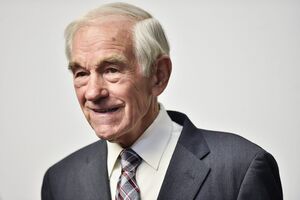
The Republic of Philimania is a constitutional federal republic with the Philimanian Constitution being the supreme law of the land. Exercising the separation of powers, the political system of the country is divded into the executive, legislative and judiciary branch, each controlled by a separate institution. The executive branch is headed by the President of Philimania. Can veto legislative bills, appoint cabinet members and Supreme Court Justices. The legislative branch is made up of the Legislative Council and the House of Representatives. Makes federal law, declares war, allocates federal funds and approves treaties. The judicial branch makes up the Supreme Court and lower federal courts. Has the power of judicial review, and is the highest legal authority after the Constitution.
The President of Philimania is elected directly by the public, and formally approved by the Legislative Council. The ministers of the cabinet are then proposed by the president, who are in turn either approved or rejected by the Legislative Council. The current president and vice-president since 2000 is Nel Karlson and Henry Field of the Philimanian Liberal Party (PLP).
In Philimania's political history, since the founding of the Legislative Council in 1654, the Philimanian Liberal Party (PLP) was most popular party and kept its status until the 2006 Philimania legislative election|X election when the Philimanian Democratic Party (PDP) surpassed them for the first time and had held its superior status until the X election. Since 1654, 74 Legislative Council elections have been held, with the most recent election being held on 28 February 2000.
Foreign Relations
TBA
Military
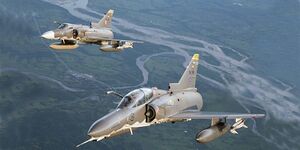
TBA
Economy
with a GDP of P$1.342 trillion and a GDP per capita of P$30,120, the Economy of Philimania is the 13th largest in both the world and South Domica. Philimania is considered to be a developed country with the 62nd highest Human Development Index of the world and boasting one of the largest rates of nominal GDP per capita in any country. The private sector is estimated to constitute 91% of the economy, with federal, regional, and local government accounting for 8.1%. Philimania employed its largest labour force of 11.4 million people in 1998, or 85% of the population, in its history; its unemployment rate was estimated at 0% in 1998, largely due to excellent employment regulations throughout the country.
Philimania's economy consists primarily of tourism, subsistence agriculture and fishing. While the couuntry has access to some resource deposits such as coal and a long history of mining, it is crucially dependant on the import of resources and energy assets from abroad. The most competitive sectors of the Philimanian industry are considered to be the automobile, agriculture and the fishing sectors. The most important trading partners of Philimania in 1999 were X at a trading volume of $151.37 billion, X with $146.60 billion, X with $126.71 billion, and X with $119.28 billion.
The income tax has three brackets with progressive rates of 9.3 percent, 15 percent, and 19.6 percent respectively. Corporate tax is four percent, and the sales tax is zero. There are no property taxes.
Tourism
Philimania is the 13th most visited country in the world, with tourist arrivals numbered some 35.9 million in 2018. Tourism as an economic sector made a considerable contribution to the national economy, generating a revenue of $135 billion, or 10.4% of Philimania's GDP in 2019. 27 of Philimania's counties are registered in some form of tourist agency. 2,842 museums, 94 theatres, 7 amusement parks, 45,940 tennis courts, approximately 87 beaches. 301 golf courses, more than 17,000 kilometres of hike trails and 9,000 kilometres of biking ways, and numerous scuba diving and snorkeling spots are all available and accessible to tourism activities. Additionally, long-term prospects for the key tourist sector have been greatly bolstered by the expansion of air travel in the Nullaric.
Agriculture
While the agricultural industry gradually diminished in their importance to the national economy, it is still considered internationally relevant in generating a wide array of products, being the fourth-largest exporter of agricultural products in South America. The domestic agricultural industry is extremely productive in that it is able to sustain and cover more than 85% of the Philimanian population's needs for food in 2019, mainly due to extensive fertile soils in northern Philimania and sophisticated modern technology used in agriculture.
Principal agricultural exports of Philimania include products of lifestock, including poultry, beef and pork, dairy products, wheat, potatoes, and fruit. Processed food such as variations of cheese and bread are also important, and form staples of Philimanian cuisine.
Science and technology
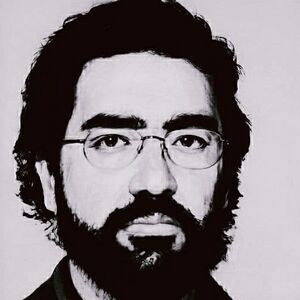
Philimania is an internationally significant and renowned location of technology and science. Since the Industrial Revolution, Philimanian scientists participated immensly in the foundation of modern science; especially the economic productivity of multiple industrial sectors and the transfer of knowledge to practical use proved pivotal in the scientific development of the Philimanian academic field. Publications of scientific matters receive international acclaim and domestic public popularity; scientific journals published in Philimania include Harefind and Archaringe, while Philimania as a research host produced more than 2% of the world's scientific research papers in 2000.
Institutions of research and science in Philimania are embodied through universities. Most of which are in public ownership and service, but their research activities are often financed by third parties such as foundations, companies, and other. The University of New Phork and the International University of Philimania remain one of the most renowned and prestigious universities in the world. Apart from the country's universities, a large number of research organizations are active across Philimania and abroad, represented and coordinated through associations and councils in compliance with the Ministry of Education and each university. the most famous of which include the Joseph Hinderman Society for basic research, the Craftsman Society as the country's largest scientific society, and the Alban Society for applied research.
Culture
Philimania is home to a variety of cultures, a result of a liberal immigration policy. Philimanian culture is generally considered "western", derived from traditions of Oranish and Iolonan culture. Like other Domican nations, Philimania has been described as a melting pot where several cultures join into one.
Philimanians have been described as very compassionate, hard-working, and competitive. This has resulted in great economic productivity and a libertarian form of government. This has also made Philimania a popular destination for immigrants. Philimanians are also firm believers in equality and do not think that one social class should have more rights than others.
Cuisine

Philimania is home to many different cuisines, a result of a liberal immigration policy. But mainstream Philimanian cuisine is similar to that in Iolona cultures with some aspects coming from Oranland. The Wee-Wee Fish, an also an important part of Philimanian cuisine and is often fried, boiled, and minced into small Pastochos, a type of tart made in Philimania. Philimanian cuisine also features dishes such as pineapple pie, Philimanian curry, panipopo, and coconut cake. Bread is also an important part in Philimanian cuisine, dishes wih bread in Philimania includes Luau Bread, Cassavon, and Po'eo.
Places serving Philimanian cuisine can be found all over the country in foodstands, restaurants, and shopping malls. Philimanian cuisine are also sold in night markets which would appear during the weekends and holidays.
Sports
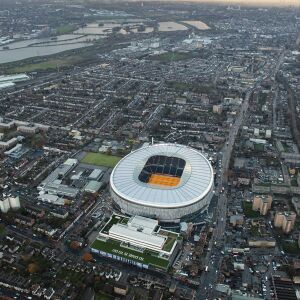
TBA
Education
TBA
Architecture
TBA
Social Media
TBA



